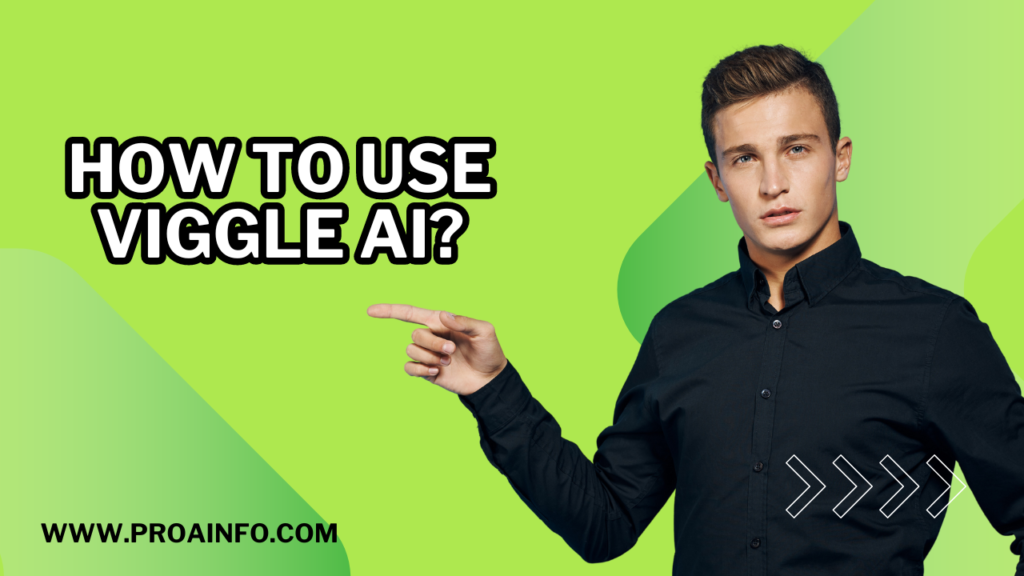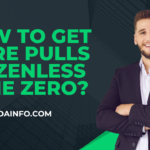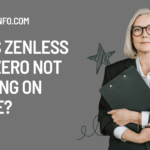How to use Viggle AI? Viggle AI is a cutting-edge technology that has the ability to analyze the movement patterns within a video clip and apply them to a still image. This innovative tool allows users to bring their static images to life, creating dynamic and captivating visuals that can be used for a variety of purposes, from creative projects to marketing campaigns.
At its core, Viggle AI utilizes advanced computer vision and machine learning algorithms to extract the motion data from a video clip. This data is then seamlessly integrated into a user’s selected image, transforming the once-static picture into a mesmerizing, animated version.
Understanding the Viggle AI Workflow
The process of using Viggle AI is straightforward and user-friendly, allowing even those with limited technical expertise to harness the power of this remarkable technology.
Here’s a step-by-step guide on how to use Viggle AI:
Step 1: Gather Your Assets
The first step in the Viggle AI workflow is to gather the necessary assets. You will need two key elements:
- Video Clip: The video clip should contain the movement patterns you wish to apply to your image. This can be a short snippet of footage showcasing a particular action or behavior, such as a person walking, a bird flapping its wings, or water flowing.
- Image: The image you want to animate using the Viggle AI technology. This can be any still image, whether it’s a photograph, a digital illustration, or a graphic design.
It’s important to ensure that the video clip and the image are compatible in terms of aspect ratio and resolution, as this will help ensure a seamless integration of the motion data.
Step 2: Upload Your Assets to Viggle AI
Once you have your video clip and image ready, you can proceed to the Viggle AI platform. The platform can be accessed through a web browser or as a standalone desktop application, depending on your preference.
On the platform, you will find an intuitive interface that guides you through the process of uploading your assets. Simply drag and drop or browse to locate the video clip and the image you want to animate.
Step 3: Adjust the Motion Parameters
After uploading your assets, Viggle AI will analyze the movement patterns within the video clip and provide you with a set of customizable parameters. These parameters allow you to fine-tune the application of the motion data to your image, ensuring that the final result aligns with your creative vision.
Some of the key parameters you can adjust include:
- Motion Intensity: This slider allows you to control the overall intensity and energy of the movement, ranging from subtle, natural-looking motion to more exaggerated, dynamic effects.
- Motion Direction: You can specify the primary direction of the movement, such as left-to-right, top-to-bottom, or a combination of directions.
- Motion Speed: The speed parameter enables you to adjust the pace of the movement, from slow and fluid to fast and energetic.
- Motion Looping: This setting determines whether the motion will loop seamlessly, creating a continuous and repeating animation, or play through once and then stop.
By fine-tuning these parameters, you can achieve the perfect balance of movement and visual impact for your animated image.
Step 4: Preview and Refine
As you adjust the motion parameters, Viggle AI will provide you with a real-time preview of the animated image. This allows you to see the effects of your changes and make any necessary refinements until you’re fully satisfied with the result.
The preview feature is particularly useful for experimenting with different motion settings, as you can quickly see how they affect the overall animation. This iterative process ensures that you arrive at the perfect combination of movement and artistic expression.
Step 5: Export and Share
Once you’re satisfied with the animated image, Viggle AI provides a range of export options to suit your needs. You can choose to export the animation as a video file, a GIF, or a series of still frames, depending on the intended use and platform.
The exported file can then be easily shared with your audience, whether it’s for a social media post, a website banner, a digital presentation, or any other creative application.
Practical Applications of Viggle AI
Viggle AI’s ability to transform static images into dynamic, animated visuals opens up a world of possibilities for a wide range of industries and applications. Here are some of the key ways in which Viggle AI can be utilized:
1. Social Media Content
In the fast-paced world of social media, eye-catching and engaging content is key to capturing the attention of your audience. Viggle AI can be used to create visually stunning, animated social media posts that stand out in crowded news feeds. Whether it’s a brand’s Instagram story, a LinkedIn post, or a tweet, Viggle AI-powered animations can help boost engagement and drive more interactions.
2. Marketing and Advertising
The marketing and advertising landscape is constantly evolving, and brands are always seeking new and innovative ways to capture the attention of their target audience. Viggle AI can be a powerful tool in this regard, allowing marketers to create dynamic, attention-grabbing visuals for digital ads, website banners, and other marketing materials. These animated images can be more effective in grabbing the viewer’s attention and conveying the brand’s message in a memorable way.
3. Presentations and Pitch Decks
Whether you’re delivering a business presentation, a conference keynote, or a pitch to potential investors, Viggle AI can help you elevate the visual aspects of your content. By incorporating animated images into your slides or handouts, you can create a more dynamic and engaging experience for your audience, helping to reinforce key points and keep them focused and interested throughout your presentation.
4. Creative Projects and Artistic Expression
Viggle AI’s ability to bring static images to life opens up a world of creative possibilities for artists, designers, and content creators. From animated illustrations and digital art to dynamic photography and motion graphics, Viggle AI can be a powerful tool for pushing the boundaries of visual storytelling and artistic expression.
5. Educational and Instructional Content
In the realm of education and training, Viggle AI can be a valuable asset for creating more engaging and impactful instructional materials. By animating diagrams, illustrations, or step-by-step processes, educators and trainers can better convey complex information and concepts, making them more accessible and memorable for their audience.
6. Product Visualization and Showcasing
For businesses that sell physical products, Viggle AI can be used to create dynamic, animated product visualizations. This can be particularly useful for e-commerce websites, where potential customers may not have the opportunity to physically interact with the product. By applying motion to product images, businesses can better showcase the features, functionality, and overall appeal of their offerings.
7. Event and Conference Visuals
Live events, conferences, and trade shows often rely on visually compelling content to create an immersive and memorable experience for attendees. Viggle AI can be used to animate event logos, session titles, and other visual elements, adding a layer of dynamism and energy to the proceedings.
Viggle AI Use Cases and Examples
To better illustrate the versatility and potential of Viggle AI, let’s explore a few real-world use cases and examples:
1. Animated Social Media Content
A fashion brand decides to use Viggle AI to create a series of animated Instagram stories showcasing their latest collection. By applying movement patterns from a video of a model walking down the runway, the brand is able to bring their product images to life in a captivating and attention-grabbing way. The result is a set of dynamic, eye-catching social media posts that drive higher engagement and encourage followers to interact with the brand’s content.
2. Animated Marketing Banners
A technology startup is launching a new product and wants to create a series of animated digital banners for their website and various ad platforms. Using Viggle AI, they are able to take static product images and apply subtle, yet impactful, movement patterns that draw the viewer’s attention and highlight the product’s key features. The animated banners help the startup stand out in a crowded online landscape and generate more leads and inquiries.
3. Animated Presentation Slides
A design agency is preparing a pitch presentation for a potential client. To make their slides more visually engaging, they decide to use Viggle AI to animate key diagrams and illustrations. By applying movement patterns from relevant video clips, the agency is able to create a dynamic and captivating presentation that effectively communicates their design process and solutions. The client is impressed by the agency’s use of Viggle AI, and it helps them secure the project.
4. Animated Instructional Content
An educational technology company is developing a series of online courses on a complex subject matter. To help learners better understand the concepts, they utilize Viggle AI to animate diagrams, illustrations, and step-by-step processes throughout the course materials. The animated visuals make the content more engaging and memorable, and the learners report a higher level of comprehension and retention compared to traditional static instructional materials.
5. Animated Product Visualizations
An e-commerce retailer specializing in home decor items wants to provide their customers with a more immersive shopping experience. They use Viggle AI to apply subtle motion patterns to their product images, showcasing how the items may move or function in a real-world setting. The animated product visualizations help potential customers better visualize the items in their own homes, leading to increased conversions and customer satisfaction.
These examples illustrate the versatility of Viggle AI and how it can be leveraged across a wide range of industries and applications to create dynamic, engaging, and impactful visual content.
Best Practices for Using Viggle AI
To ensure you get the most out of Viggle AI and create visually stunning, effective animated content, here are some best practices to keep in mind:
- Choose the Right Video Clip: Select a video clip that closely aligns with the movement patterns you want to apply to your image. This will help ensure a seamless and natural-looking integration of the motion data.
- Match the Aspect Ratio and Resolution: Ensure that the video clip and the image you want to animate have compatible aspect ratios and resolutions. This will help prevent distortion or unwanted cropping during the animation process.
- Experiment with Motion Parameters: Take the time to explore the various motion parameters and find the right combination that best suits your image and desired effect. Don’t be afraid to try different settings and refine the animation until you’re completely satisfied with the result.
- Consider the Intended Use: Think about where and how the animated image will be used. This will help you make informed decisions about the appropriate level of motion intensity, speed, and looping to achieve the desired impact.
- Optimize for File Size: When exporting your animated image, be mindful of the file size, especially if it’s intended for use on the web or in digital media. Consider compressing the file or exporting it as a GIF to ensure optimal performance and load times.
- Test and Iterate: Before finalizing your animated image, be sure to test it in various environments and on different devices. This will help you identify any potential issues or areas for improvement, allowing you to make further refinements as needed.
- Leverage Templates and Presets: Viggle AI may offer pre-designed templates or presets that can serve as a starting point for your animated content. These can be particularly helpful for users who are new to the platform or looking to save time on the creative process.
- Collaborate with Professionals: If you’re working on a high-stakes project or have specific creative or technical requirements, consider collaborating with professionals who have expertise in visual design, motion graphics, or video production. They can provide valuable guidance and support to ensure the best possible outcome.
By following these best practices, you can unlock the full potential of Viggle AI and create visually stunning, impactful animated content that captivates your audience and achieves your desired goals.
Conclusion
Viggle AI is a revolutionary technology that empowers users to transform static images into dynamic, animated visuals. By analyzing the movement patterns within a video clip and applying them to a still image, Viggle AI opens up a world of creative possibilities across a wide range of industries and applications.
Whether you’re a social media marketer, a content creator, an educator, or a business looking to showcase your products in a more engaging way, Viggle AI offers a user-friendly and powerful solution to bring your visual content to life. By mastering the Viggle AI workflow and following best practices, you can create visually stunning, attention-grabbing animations that capture the hearts and minds of your audience.
As technology continues to evolve, tools like Viggle AI will only become more essential in the pursuit of innovative, impactful, and visually captivating content. By embracing this cutting-edge technology, you can stay ahead of the curve, stand out from the competition, and deliver truly remarkable visual experiences that leave a lasting impression.








1 thought on “How to use Viggle AI?”